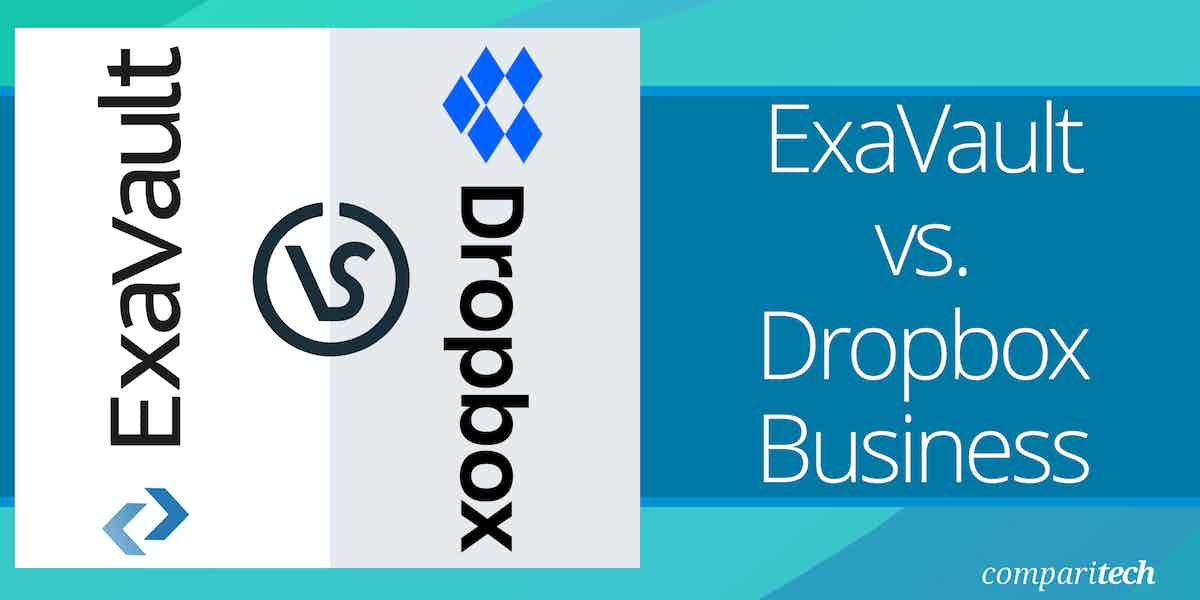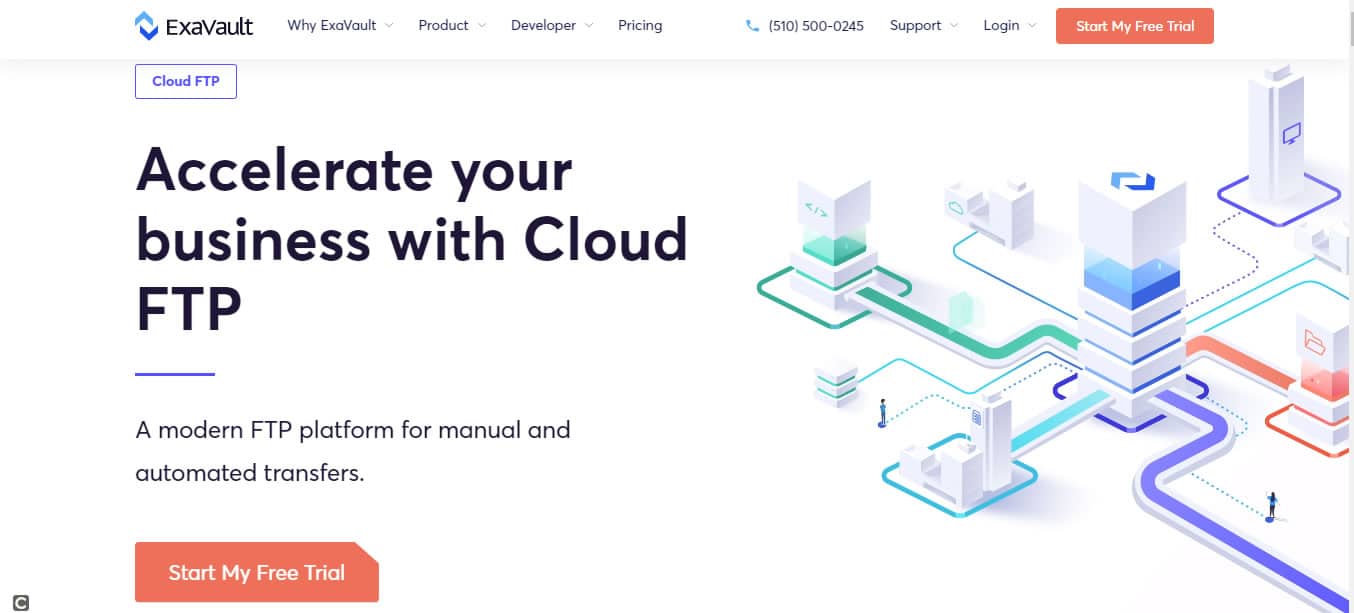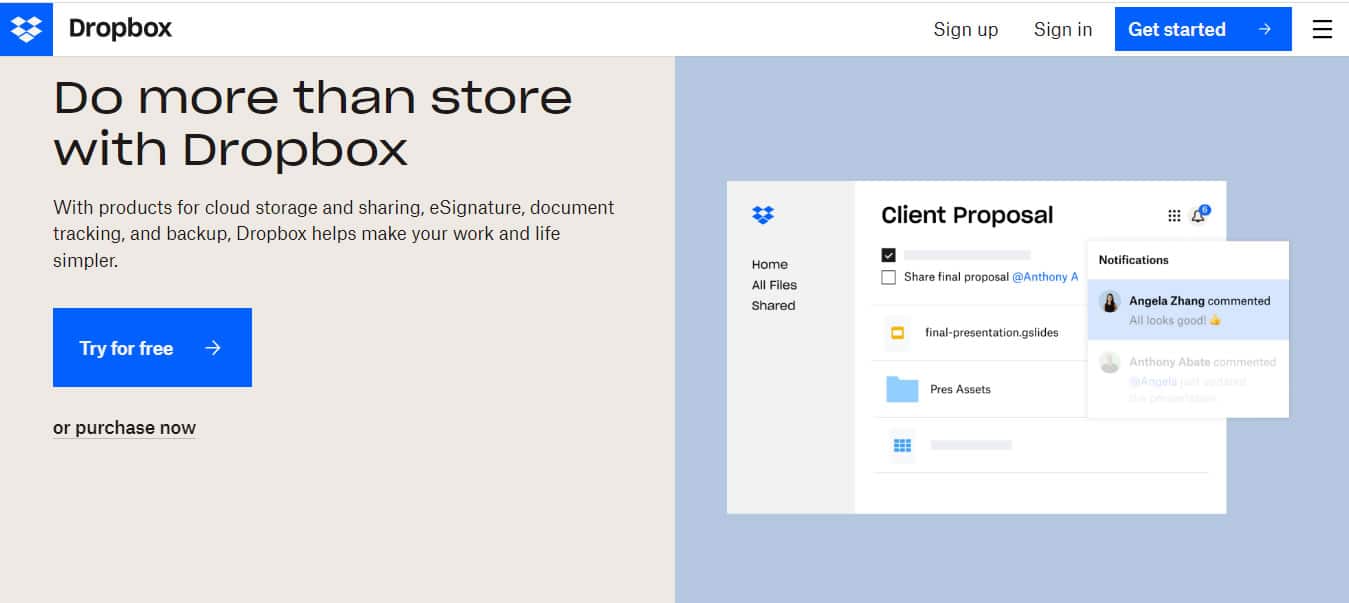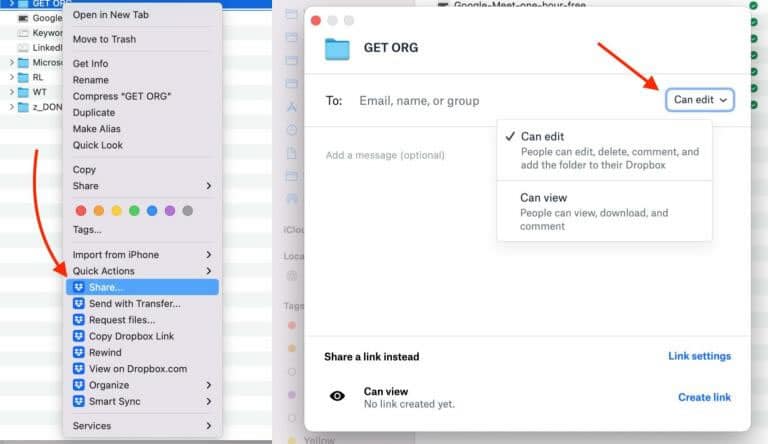Overview of ExaVault
ExaVault is a cloud-hosted FTP platform that enables organizations to securely store, transfer, and share files between users, teams, and organizations. The ExaVault FTP solution provides a robust and secure environment for transferring files over the Internet. It offers a range of features and functionalities that cater to the needs of businesses and individuals who require a reliable and user-friendly file transfer system. ExaVault is targeted at SMB and mid-market businesses and provides support for FTP, SFTP, FTPS, and FTP-SSL protocols. If you or your organization frequently works with large files and requires a reliable and efficient file transfer system, ExaVault is an excellent choice.
In March 2022, ExaVault was acquired by Files.com — a U.S.-based cloud-native Managed File Transfer (MFT) service. However, according to ExaVault, it will continue to operate as a standalone platform in the short term, over the year until it is fully merged with Files.com platform. Thereafter, ExaVault existing customers will be migrated onto the unified platform, and will get the following additional capabilities and benefits included with their subscription:
- SOC-2 compliance
- Global footprint: Your choice of 7 regions for file storage, including Europe, the UK, Australia, Japan, and Singapore
- Built-in Microsoft Office integration, supporting real-time co-editing
- Stronger security features, including encryption at rest, 3 more types of 2FA, and more compressive controls around IP lists, keys, and passwords
- Granular permissions capabilities
- Desktop app (Windows and Mac)
- Mobile App (iOS and Android)
- Command line app, better API, and SDKs for 6 languages
- Higher quality, instant search results
Pros:
- Storage space per user
- Cloud-mediated file transfers
- Collaboration features
- Link invites for access
- Central control of user accounts
Cons:
- No on-premises version
Exavault offers a free 10-day trial with full access to the entire platform, including all integrations, automations, protocols, and APIs. When you’re ready to buy, your trial environment will seamlessly convert into your paid environment.
Overview of Dropbox
Dropbox is a U.S.-based cloud file hosting service that offers cloud storage, file synchronization, and sharing services for individuals and businesses. Dropbox uses a client application and a special folder created on user devices to bring files together in one central place on Dropbox’s cloud servers. The contents of these special folders are synchronized to Dropbox’s servers and to other computers and devices where the user has installed the Dropbox client app, keeping the same files up-to-date on all devices. Dropbox offers a variety of features, including the ability to create shared folders, collaborate on documents in real-time, and version control.
Dropbox uses both freemium and premium business models. The premium model offers users free accounts with set storage size; while the premium model or Dropbox Business offers paid subscriptions with more capacity and additional features such as Dropbox Rewind for file restoration, e-sign for signing and requesting digital signatures from others, and DocSend for real-time analytics. It also offers advanced document controls, personalized document spaces, and more.
Dropbox Business is specifically targeted at professionals, companies, and enterprises. The business plan offers more than just cloud storage, it’s a tool for collaboration, team management, and workflow optimization. It is enriched with many team features, tighter admin controls, and collaboration and sharing settings. Over 700 million registered users and 500,000 teams representing over half the Fortune 500 companies use Dropbox as a secure, flexible workspace.
Pros:
- A cloud drive per user
- Syching for workstation storage
- Can replace local storage on workstations
- Accessible through mobile apps
- File sharing possible
Cons:
- No cloud productivity suite
A free 30-day trial of Dropbox Business is available on request with full access to collaboration tools, content protection, and sharing controls. You will be required to make payment before your trial expires, otherwise, your account will downgrade to the free version at the end of your trial.
ExaVault Vs Dropbox Business: How They Compare
Installation and Setup
ExaVault is a cloud-based FTP application, which means there are no installation hassles other than the usual sign-up process using an internet-connected device with a supported browser. The sign-up process is straightforward and can be completed in a few simple steps as shown below:
- Sign up and create an account Visit the ExaVault website and sign up for an account. You will need to provide your basic information and choose a subscription plan that suits your needs.
- Set up your workspace After signing up and logging in, you will need to set up your workspace. A workspace in ExaVault is essentially a container for your files and folders. You can create multiple workspaces based on your requirements, such as for different projects or clients.
- Configure user accounts As the account administrator, you can create user accounts for yourself and others who will be accessing the ExaVault platform.
- Connect to ExaVault Connect to ExaVault using your favorite FTP client software. Once connected, you can start transferring files to and from your ExaVault workspace.
Similarly, Dropbox is also a SaaS-based file hosting and sharing application, which means there are also no installation hassles other than the usual routine sign-up process. However, you will be required to install a local agent or client application specific to the operating system of the device you wish to use to connect to the Dropbox service.
When you create a Dropbox account, and you download and install the client app, the program creates a folder on your computer called Dropbox. You can choose where to install it now or later, or you can accept the default location. Once installation is complete, an icon appears in the system tray on Windows or the top menu bar on Mac that lets you open your Dropbox folder with just one click. From this same icon, you can also access the Preferences and Settings option to adjust the folder’s location, upload and download speeds, and other settings.
Cloud Storage and Backup
Exavault isn’t designed for online storage and backup, but it performs this function indirectly. It is primarily a cloud-based managed file transfer application, which means its focus is on the secure transfer of files. This also implies that the huge amount of file data that passes through the Exavault network for file transfers is also securely stored on their cloud storage servers around the world. Uploading files, copying files, creating, or updating new versions all contribute to additional storage usage. ExaVault also allows you to create folders and subfolders within your workspace, enabling you to organize your files and maintain a structured file hierarchy. This makes it easier to locate and manage your files efficiently.
Dropbox, on the other hand, is a file hosting and file-syncing service, which means data storage is part of its primary function. Dropbox brings files together in one central place by creating a special folder on the user’s computer. The contents of these folders are synchronized to Dropbox’s cloud storage servers. Dropbox Business users have access to higher storage capacity; while freemium users have access to limited cloud storage capacity. The free Basic account provides a meager 2 GB. Although Dropbox isn’t technically a full-scale online backup service, the service does allow you to select important files and folders on your devices to back up and store in the cloud, which you can recover at any time. Overall, Dropbox is an excellent alternative choice for cloud storage—especially for those who are skeptical of storing their data on the servers of major cloud computing players such as Amazon, Google, and Microsoft.
File Sharing and Collaboration
The real power of Exavault is made manifest when it comes to business-critical managed file transfer workloads. Within ExaVault’s user-friendly web-based interface, you can conveniently send files, share folders, receive files, and perform various tasks effortlessly. The intuitive design allows for seamless navigation, and the drag-and-drop feature simplifies the organization of your files. All your files and folders are accessible in a single, easy-to-manage interface. With streamlined file transfer operations, you can search, click, and share files effortlessly, enabling efficient collaboration and productivity.
A shared folder allows you to let outside parties access a folder in your account (including any files and nested subfolders) using just a link. A file send lets you send one or more files via an easy download link. File sends are different from shared folders because file sends are ‘point in time’ – the recipient will get the files as you sent them. Sharing a folder with customers or colleagues is as simple as a single click, instantly generating a unique URL for the shared folder. You can conveniently send invitations via email or instant message to grant access to the shared folder directly from the interface.
In terms of performance, the ExaVault FTP platform excels at providing fast and efficient file transfers. It leverages multiple data centers strategically located around the world, ensuring that users experience reliable and speedy transfers regardless of their geographic location. This makes it an ideal solution for businesses with global operations or remote teams that need to exchange large files quickly.
For Dropbox, hosting your files with them means you can also share them easily with others. When you put files in the Dropbox folder, Dropbox automatically syncs them everywhere, so they’re available on any internet-connected machine where you’ve installed Dropbox or that has a web browser. Just like most file-sharing applications, Dropbox allows you to securely share files with users across the internet. It allows you to set permissions such as who can access it, what you can do with it, and for how long (file expiration date).
Although Dropbox isn’t a full-scale collaboration tool, it does offer excellent support for users who want or need to work with others on the files they store in the Dropbox cloud. Dropbox allows you to collaborate in two key ways: One is by sharing files and folders. The other is by enabling collaborative authoring, editing, and commenting directly on files that you share.
Integrations and Extensions
With ExaVault’s RESTful API, you have complete control and the ability to automate various aspects of your account. This powerful API empowers you to perform tasks such as creating new users, transferring files, retrieving activity logs, and more. Additionally, ExaVault offers built-in webhooks that provide programmatically triggered notifications whenever changes occur. You can leverage web or FTP connections to seamlessly transfer files, and orchestrate all of these functionalities seamlessly using the ExaVault API.
Dropbox’s approach to integration and support for other apps is quite different from ExaVault, and that’s understandable. Its goal is to enable integration with mostly productivity apps to bring speed and simplicity to your distributed team, supercharge workflows for creators, and make collaborative work easier. Dropbox provides out-of-the-box integrations with the apps your team uses every day including Office 365, G Suite, Adobe Creative Cloud, Jira, Asana, and Trello. Slack, Zoom, Salesforce, and other similar tools. For those who want to build custom integrations, the DBX Platform enables you to leverage the Dropbox APIs to build custom integrations and solutions that improve collaboration, streamline workflows, and secure content.
Security and Privacy
ExaVault prioritizes data security by implementing advanced encryption protocols during file transfers and storage. This ensures that your files are protected from unauthorized access and interception. The platform utilizes industry-standard encryption protocols to protect data during transit, ensuring that files are securely transferred between parties. Additionally, ExaVault offers advanced user management features, allowing administrators to set user permissions and control access to specific files and folders.
ExaVault provides support for user permissions (read-only, write-only, limit sharing, restrict to home folder, expire user), global permissions (Limit to FTPS/SFTP, IP restrictions, require two-factor authentication, comprehensive audit logs), and share permissions (expire share, password protection, require an email to access, download only mode, delivery receipts). Shared folders can be restricted; e.g., with an expiration date, password, download-only, etc. Share access logs let you review who’s done what at any given time. It keeps you up-to-date with who has been in the share when it was created, and if any files have been downloaded.to meet regulatory requirements.
Similarly, Dropbox is also packed with lots of security features to protect the confidentiality, integrity, and availability of data. It uses standard SSL/TLS encryption for data-in-transit and 256-bit AES for encrypting data-at-rest. A password manager called Dropbox Passwords and multi-factor authentication mechanisms are available to manage user authentication. Dropbox also allows you to e-sign documents and request digital signatures from others. Dropbox Rewind helps you restore and recover infected files after a ransomware attack. The company says it won’t sell user information to advertising agencies or other third parties. But being a U.S.-based company, the government using search warrants may request access to user data. As a result, Dropbox provides transparency reports detailing how they handle government requests for user data.
Licensing and Price Plans
ExaVault offers affordable pricing options for businesses of all sizes. Its pricing plans are broken into Starter, Power, and Premier price plans as shown in the table below.
| Features | Starter | Power | Premier |
|---|---|---|---|
| Minimum User Commitment | 5 | Minimums Apply | Minimums Apply |
| Monthly Usage Included | 1 TB | 5 TB | 10 TB |
| Daily API Request Limit | 50,000 | 250,000 | 2,000,000 |
Table 1.0 | ExaVault Pricing and Licensing Plans
Plan pricing is partially based on user count, which means that you must commit to a minimum number of users. Charges are based on one total monthly number called “Usage,” representing your total billable usage of the Exavault service. This “Usage” number is the sum of your “Storage Usage” and your “Transfer Usage”.
Dropbox Business is not for the faint-hearted. Comparing it to ExaVault and other similar services, you’ll see that Dropbox’s prices are higher, and the amount of storage space you get with a free account is relatively low. Dropbox charges a lot more for storage space compared with what you can get if you were to pay for an Office Suite subscription with Google or Microsoft. But in return, Dropbox provides the excellent service and support needed to make collaborative work easier and keep your distributed teams connected and projects moving.







